Two-minute review
Last year’s OnePlus Nord 2 was a superb addition to the sub-£400 smartphone market, providing near-enough-flagship performance and camera capabilities for a much lower price.
It was so good, OnePlus didn’t even bother releasing a OnePlus 10 this year. The lines had seemingly become too blurred to warrant a separate lower-flagship release – or at least that’s how it seemed.
Now the OnePlus 2T is here with an extremely minor spec bump, and while it’s a fine phone to use, we’re a little puzzled as to why it exists. With reports suggesting that the OnePlus Nord 3 is still very much on the cards, its position in the wider range seems rather precarious.
With much the same 6.43-inch 90Hz AMOLED display as the Nord 2, almost identical performance, and exactly the same camera and battery systems, this is a revision rather than a wholly new model.
It’s not quite identical to the Nord 2, though. OnePlus has brought across the speedy 80W charging from the OnePlus 10 Pro, as well as a slight faster and more efficient Dimensity 1300 processor. But we really are talking about marginal gains here.
Perhaps the biggest and most interesting advance relates to the pricing. With a new £369 (around $460/AU$655) price tag, the OnePlus Nord 2T instantly becomes one of the best all-round options in the mid-range category.
Its tidy design, clean software, crisp photographs, and accomplished all-round performance leave many a £500 and £600 phone looking precariously overpriced.
All in all, the OnePlus Nord 2T leaves us rather conflicted. While it’s undoubtedly a very good mid-range smartphone indeed, there’s no escaping the fact that it’s an incremental upgrade at best. At worst, it could be viewed as flat-out unnecessary.
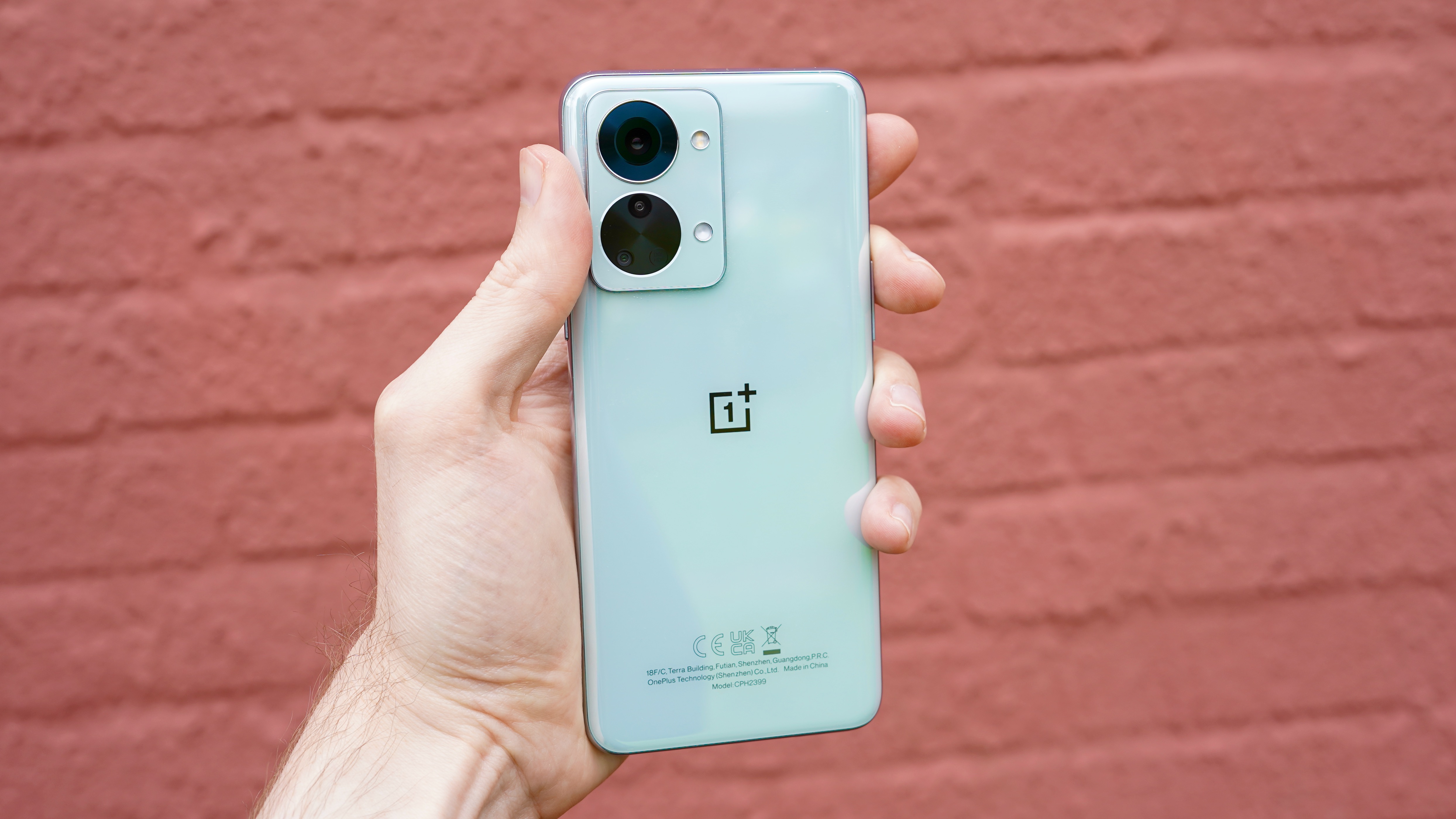
OnePlus Nord 2T price and availability
The OnePlus Nord 2T hits shops on May 24, 2022, with two hardware variants on offer.
The entry-level model comes with 8GB of RAM and 128GB of internal storage at a price of £369 (around $460/AU$655). The step-up model will give you 12GB of RAM and 256GB of internal storage, and costs £469 (around $580/AU$830).
This represents a slight price decrease here in the UK, where the OnePlus Nord 2 started from £399 back in July 2021. At this price, the OnePlus Nord 2T also stands as a direct rival to the Redmi Note 11 Pro Plus 5G and the Realme 9 Pro Plus.
OnePlus Nord 2T design
It’s fair to say that we weren’t blown away by the OnePlus Nord 2’s by-the-book design, and the OnePlus Nord 2T barely makes any effort to change that perception.
Once again it feels nice enough to hold, with Gorilla Glass to the front and rear surfaces and a metal-effect plastic frame. But the design language itself is pretty dull. Even the new Jade Fog (which we tested) and Grey Shadow (essentially black) shades seem a little muted.
The main difference here seems to come from the revised camera module, which is slightly squatter, and which increases the size of the circular sensor frames to something a little more interesting. We say ‘interesting’, but the effect of the ultra-wide sensor being pushed up to the top of its mounting leaves the phone looking a little cross-eyed.
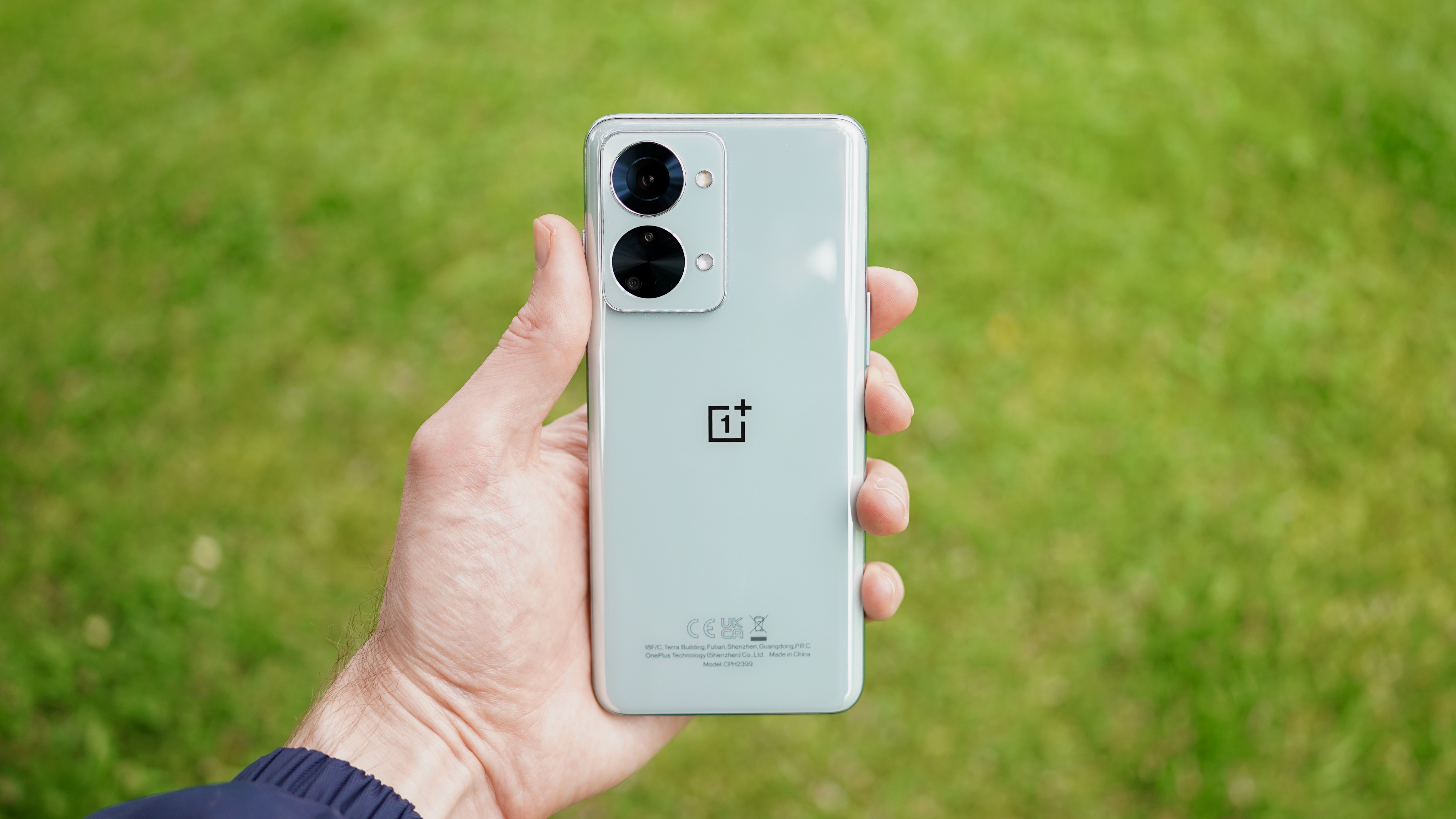
It’s almost exactly the same size as the OnePlus Nord 2, give or take the odd fraction of a millimetre, with dimensions of 159.1 x 73.2 x 8.2mm. It weighs just a single gram more at 190g.
Of course, all of this means that the Nord 2T feels relatively compact in the pocket. Together with a familiar curved rear, it sits just as well in the hand, though our Jade Fog model seems prone to displaying all of your sweaty finger smudges.
OnePlus Nord 2T display
The OnePlus Nord 2T features a 6.43-inch AMOLED display that will be familiar to any Nord 2 owners. OnePlus has confirmed that it’s the same screen as the Nord 2, with the minor addition of dual ambient light sensors.
The latter helps OnePlus to better adjust the display’s brightness according to your environment. It’s not the sort of thing you’ll notice, but it’s a welcome tweak nonetheless.
As before, this is a nicely proportioned, sufficiently sharp 1080 x 2400 screen, with a smooth but hardly class-dominating 90Hz refresh rate.
Colors are accurate, while the peak brightness is usable rather than flat out impressive.
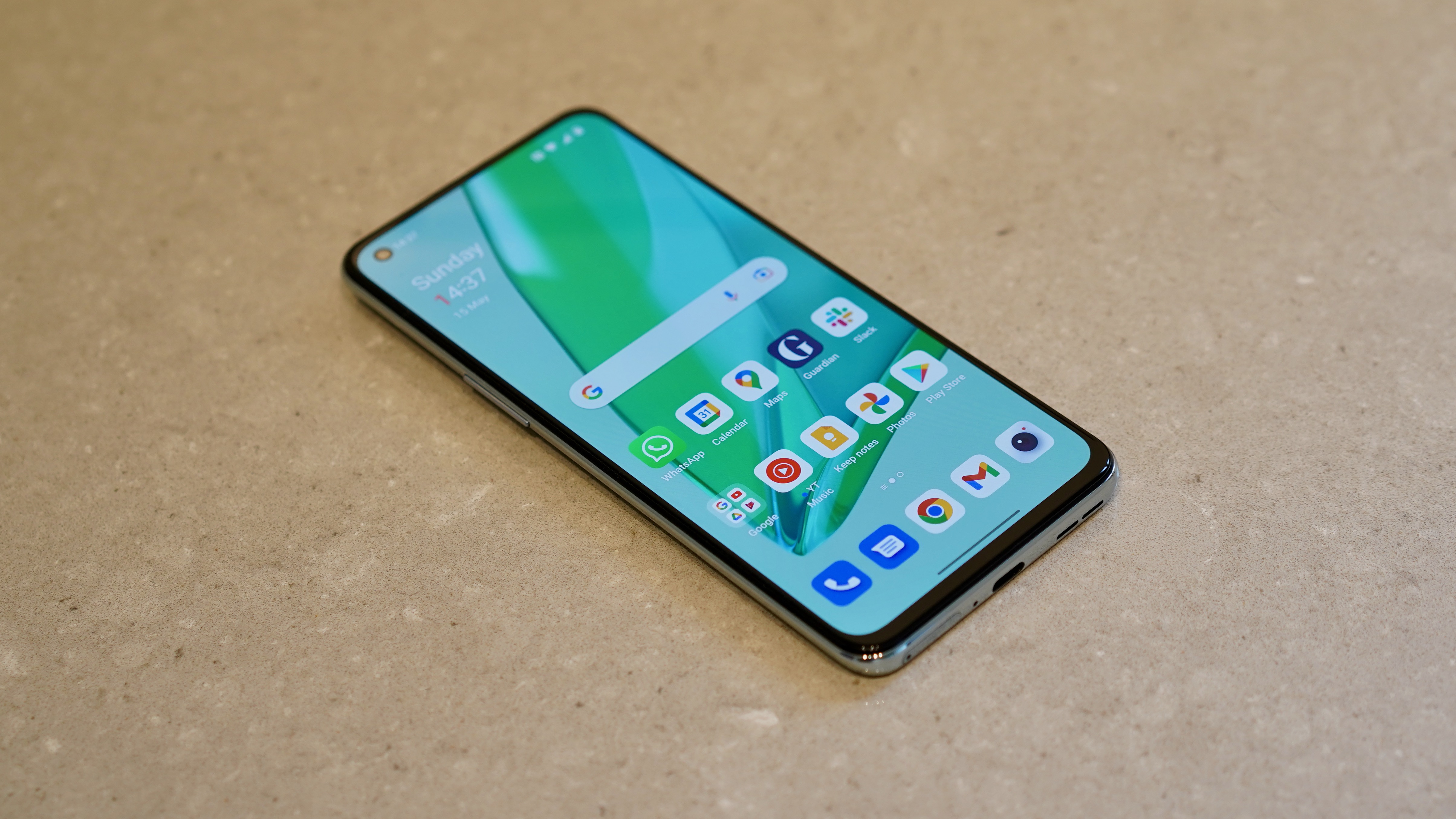
Together with a flat form factor and a speedy and reliable in-display fingerprint sensor, it’s a thoroughly pleasant display to use and view media content on.
All in all it’s a close match for the Realme 9 Pro Plus, but it falls a little short of the 6.67-inch 120Hz behemoth of the Redmi Note 11 Pro Plus 5G.
OnePlus Nord 2T cameras
At the risk of repeating ourselves, the OnePlus Nord 2T has the exact same rear camera hardware as the OnePlus Nord 2.
That means a 50MP Sony IMX766 wide sensor with OIS, an 8MP 120-degree ultra-wide sensor, and a 2MP mono sensor. You also get the same 32MP selfie camera.
Once again, though, it’s all about that main sensor. The Sony IMX766 is a huge 1/1.56" sensor, which is way bigger than we’re used to seeing at this price point – aside from the Nord 2 and the Realme 9 Pro Plus.
The results are as impressive here as they were on those two phones, with plenty of detail. The optional AI assistant pumps up the colors, which some will prefer, but we generally preferred the more natural results we captured with unassisted shots.
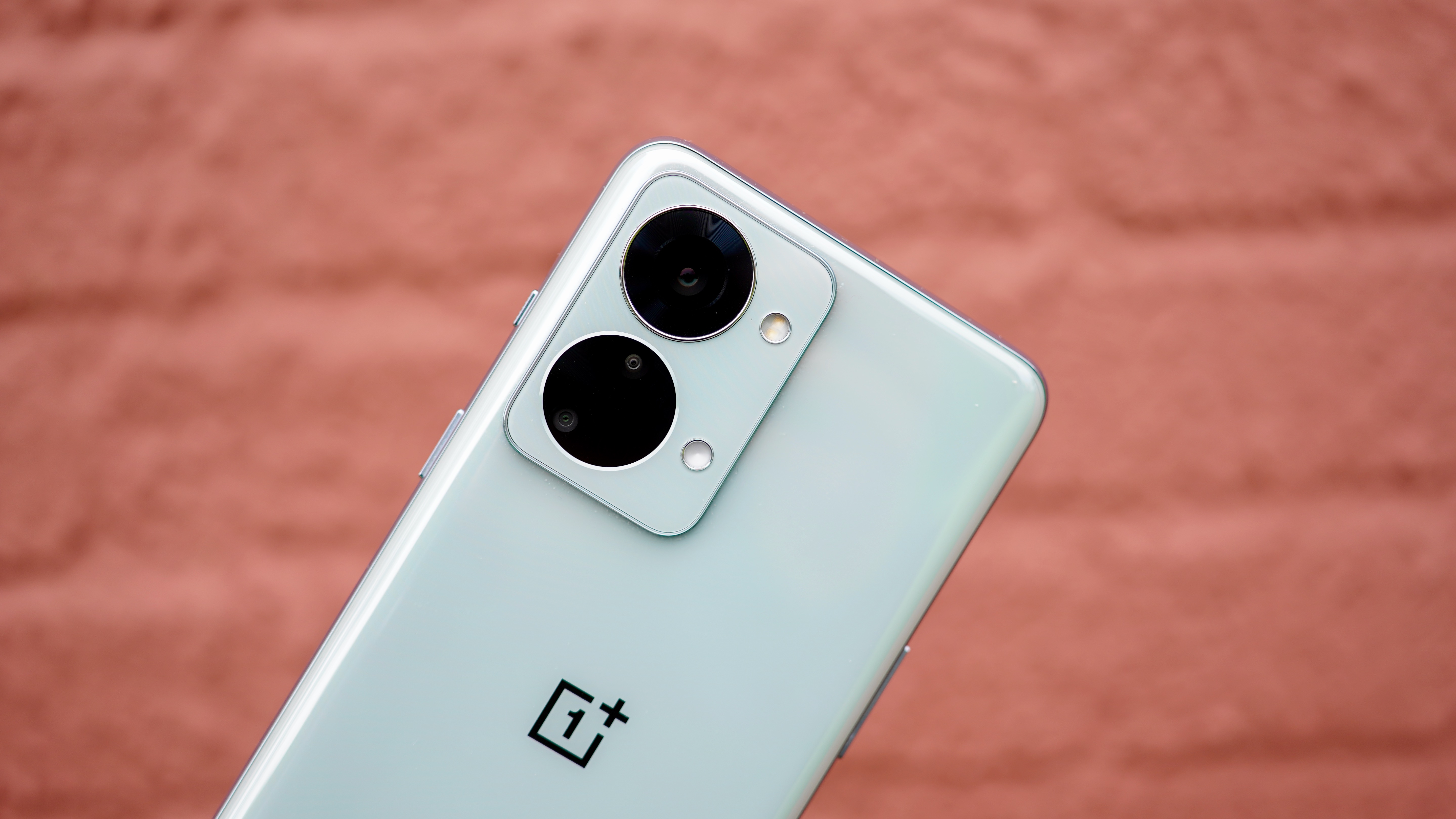
Taking pictures of subjects creates a nice natural depth of field and crisp edges, with nice natural skin tones.
OnePlus claims that the real improvements here are AI-based, and that the quality of Night mode shots in particular have taken a step forward. We didn’t have the Nord 2 to hand to compare, but we were certainly pleased with the crisp, evenly lit shots we obtained. They weren’t quite flagship standard, but they’re far closer in quality to high-end phones than to cheaper handsets.
Unsurprisingly, the 8MP ultra-wide camera doesn’t live up to that superb main sensor. Detail in particular falls way off, especially when the light starts to drop, and the tone is generally paler. They’re usable, but the vast majority of the time you’ll want to stick with that 1x.
2x zoomed shots are surprisingly usable given the lack of a dedicated telephoto. You can thank that large, sharp, pixel-packed main sensor again for this.
Video capture has also been enhanced by OnePlus’s AI push, with an AI Highlight mode successfully helping to even out backlit scenes, keeping the subject clearly lit. There’s also support for 960fps slo mo videos.
Selfie shots are generally of a decent standard (this is the same selfie camera as the OnePlus 10 Pro), and it worked reasonably well to rein in the bright highlights on a particularly sunny day. I did spot some weird edge artefacts on some of of the shots, however.
Camera samples













OnePlus Nord 2T performance and specs
Perhaps the first major difference between the OnePlus Nord 2 that we’ve discussed so far is the move from a Dimensity 1200 chip to a Dimensity 1300.
When you really get down to it, though, it isn’t really much of an upgrade. Yes, the production process used is a smaller 6nm (vs 7nm), which means that the Nord 2T runs a little cooler and more efficiently.
In performance terms, however, the difference seems negligible. In fact, an average Geekbench 5 score of 576 single-core and 2757 multi-core evens out to about the same.
There’s a more pronounced bump in the GPU stakes, where a 3DMark Wild Life benchmark score of 4623 (27.70fps) represents a roughly 10% increase over the Nord 2. But we’re hardly talking a night and day ramp up here.
Indeed, the main practical performance gain might come from a claimed 14% reduction in download and installation times.

Of course, the Nord 2 was notable for performing above its price point (the super-speedy Poco F3 being something of an outlier at the time), so this isn’t necessarily a complaint. Being able to play the notoriously punishing Genshin Impact on High/60fps graphical settings without the whole thing slowing to single digit frame rates is pretty impressive here.
It certainly outperforms the Realme 9 Pro Plus, which is the closest thing to the Nord 2T/Nord 2 in terms of the overall package.
All this is aided by a generous allotment of either 8 or 12GB of RAM, which is the kind of option you expect to find in the flagship tier.
OnePlus Nord 2T software
OnePlus has bundled the Nord 2T with its custom Oxygen OS 12.1 UI, which sits on top of Android 12. It’s promising two major Android updates and three years of security updates.
Oxygen OS has lost a little of its slick lustre in the past year or so, thanks to its merging with Oppo’s ColorOS. It shares the same underpinnings, though it still retains the OnePlus brand’s slightly more tasteful menu flourishes.
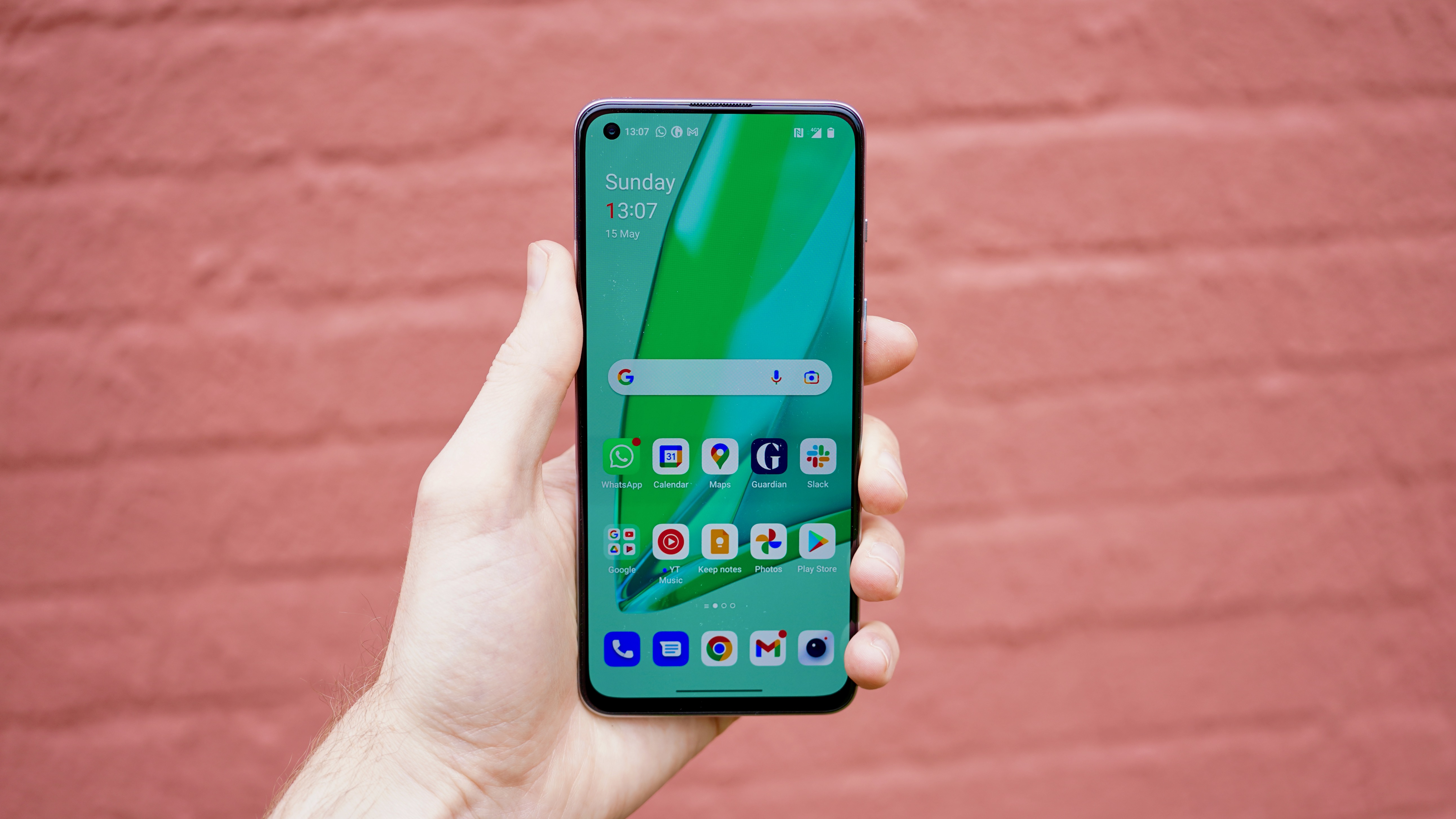
You get the option of OnePlus’s own OnePlus Sans font (though we preferred Google’s Roboto) and stylish always-on display graphics and wallpapers. Otherwise, the menus and structure are decidedly Oppo.
One ‘enhancement’ we weren’t too fond of was the OnePlus Shelf. Drag down from the top right corner, and a shortcut menu will come down, offering access to weather widgets, a step track, and instant note prompt, a Spotify widget, and various apps.
It feels slightly clumsy and superfluous, and we were constantly bringing it down when all we wanted was the notification menu. Thankfully, it’s easy enough to deactivate this Shelf within the Settings menu.
OnePlus Nord 2T battery life
As with the OnePlus Nord 2, not to mention key rivals such as the Realme 9 Pro Plus and Redmi Note 11 Pro Plus, the OnePlus Nord 2T supplies a 4500mAh battery.
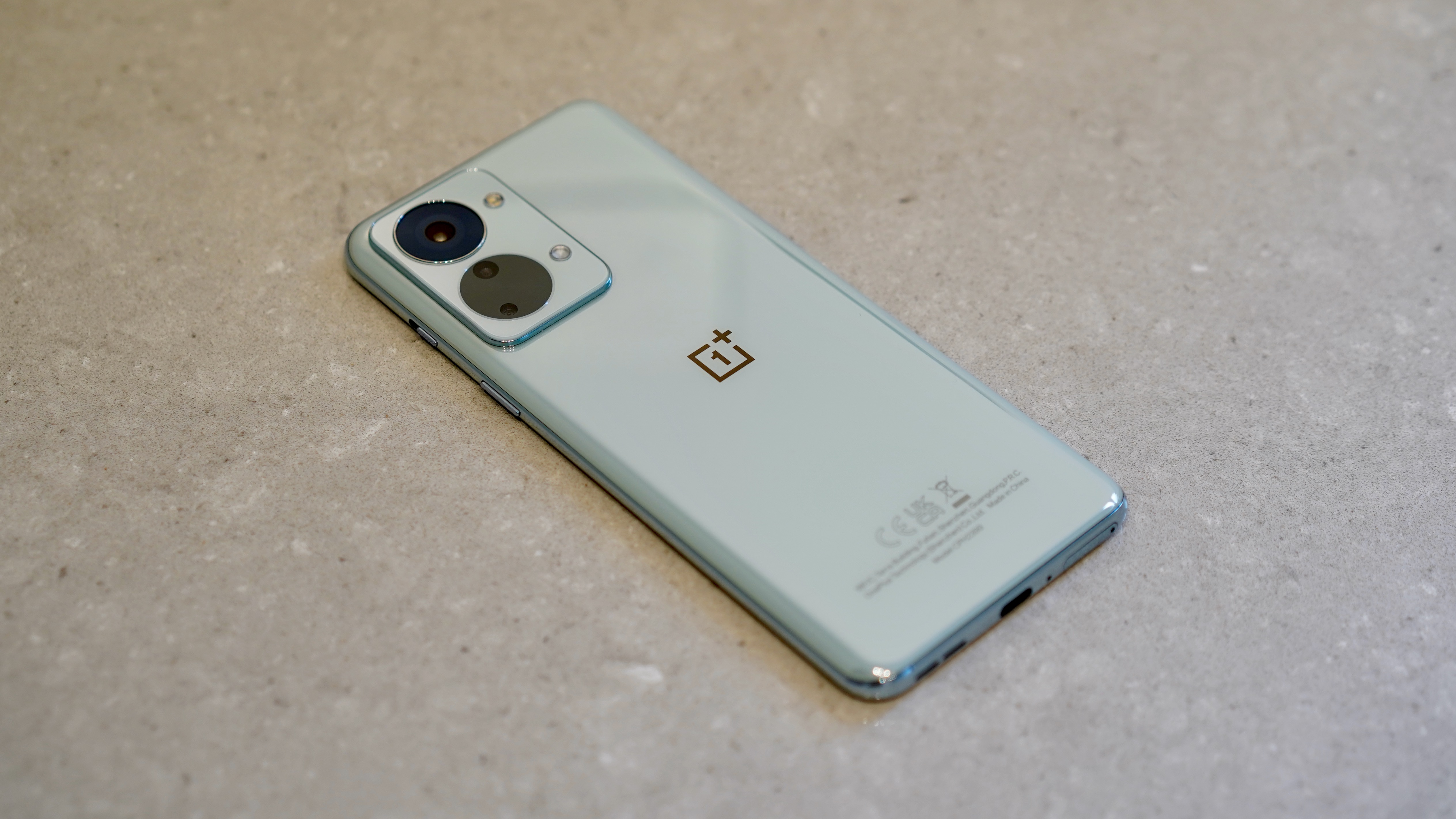
This doesn’t hit the 5000mAh capacity that very cheap and very expensive phones seem to aim for, but the balance of components here doesn’t seem to necessitate such a cell.
In practice, we were routinely able to get through a long day of moderate usage with around 40% left in the tank. On one more intense day, which involved 4 hours 15 minutes of screen-on time and a couple of matches of the demanding Apex Legends Mobile game, we were left with just under 30%.
This isn’t outstanding battery performance by any means, but it’s perfectly acceptable, and seems like a small improvement over the OnePlus Nord 2 – though with different reviewers, usage scenarios, and network environments, it’s impossible to be 100% sure.
One aspect that’s undoubtedly superior is the charging provision. OnePlus has packed in exactly the same 80W charger as its flagship OnePlus 10 Pro, which is impressive stuff. It’s good for getting you from 1 to 67% in just 15 minutes, which might just stop you from charging your phone overnight.
Only the Redmi Note 11 Pro Plus, with its 120W charger, can really top it this price.
Of course, the OnePlus Nord 2’s 65W charging provision was hardly slow, and could also get you up to full in less than 30 minutes. We seem to have reached a point of diminishing returns with this stuff.
Also, while the OnePlus Nord 2T approximates the flagship phone experience in most ways, it lacks wireless charging.
Should I buy the OnePlus Nord 2T?

Buy it if...
Don't buy it if...
Also consider
- First reviewed May 2022
from TechRadar - All the latest technology news https://ift.tt/F9nG8M7

No comments:
Post a Comment